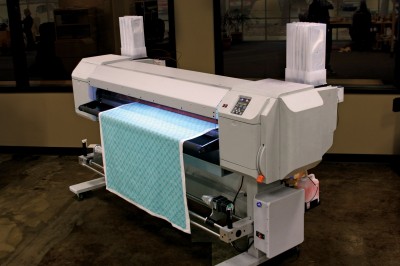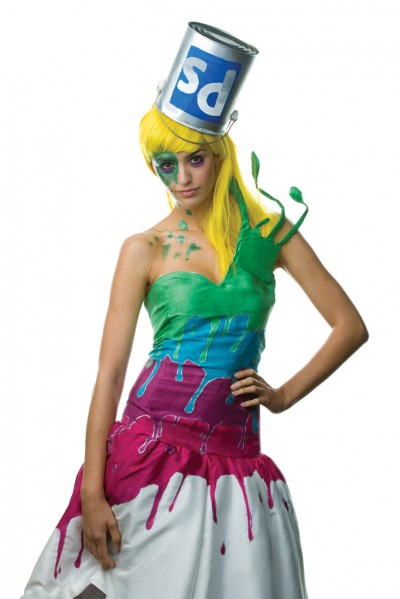The flexibility of fabrics
As mentioned, printing onto fabrics is significantly different from printing onto paper, vinyl or films. The characteristics of the fibres within textiles, how they are woven and what treatments they contain will all affect the printing.
Once these characteristics are understood, however, there are significant advantages to digital printing over analogue processes, such as screenprinting, offset printing or gravure. The most obvious is the ability to reduce print run lengths.
Printing shorter runs at a reasonable cost enables companies to produce samples efficiently or even introduce a new printed-fabric product line in a phased approach to measure its sales potential. Flexibility can be provided by using different sizes of printers or combining them for larger output.
Flexibility in design is also a major advantage of digital textile printing. No longer do images need to be separated into a manageable number of colours for screenprinting or other analogue processes. As steps like screen production are eliminated, digital designs can be created without any limits on their colour scheme. More complex designs make it less likely that apparel, for example, can be successfully copied with knockoffs.
In the sign industry, digitally printed fabrics help reduce the weight of point-of-purchase (POP) graphics, trade show displays, event banners and interior décor, compared to vinyl substrates. This can reduce freight costs drastically and allows for much easier and more space-efficient storage, which all contributes to a smaller carbon footprint.
Soft, flexible fabrics are particularly ideal for contoured graphic applications. There is also an esthetic appeal to fabrics that is not possible with other substrates.
Specifying a system
When considering digital textile printing systems, it is important first to choose the market to pursue. This will lead to a choice in fabrics, which in turn will determine which type of ink to use. As Chart 1 on page XX shows, an ink’s type determines how it becomes fixed to the fabric and whether or not that fabric needs to be pretreated. (Some printers can use all of the listed inks.)
The sign and banner market, for example is well-served by polyester fabrics, due to their durability and printability. There are two types of inks that can be used with polyester: dispersed-dye and pigment-based. Dispersed-dye inks, which yield a wider colour gamut, are the most commonly used, but pigment inks may be preferable in cases where graphics need to be more lightfast (i.e. resistant to fading or other changes when exposed to light).
For the home furnishings market, on the other hand, reactive inks on pretreated fabrics provide the higher level of durability necessary. Other types of inks for various applications include acid dyes and dye-sublimation inks.

One of the advantages of digitally printing fabrics, compared to analogue processes, is the ability to reduce print run lengths. Samples can be produced more efficiently.
After deciding on the market, fabric and ink type, then, the next step is to choose the appropriate printing platform. There are now a variety of entry-level machines available for sign shops looking to branch out into new services.
In general, digital textile printers have become more user-friendly and their raster image processor (RIP) software has improved significantly. While they are not simply plug-and-play machines, given the nuances of soft substrates (especially if a shop prints on a variety of different fabric types), a signmaker certainly does not need to be a textile expert to achieve success.






